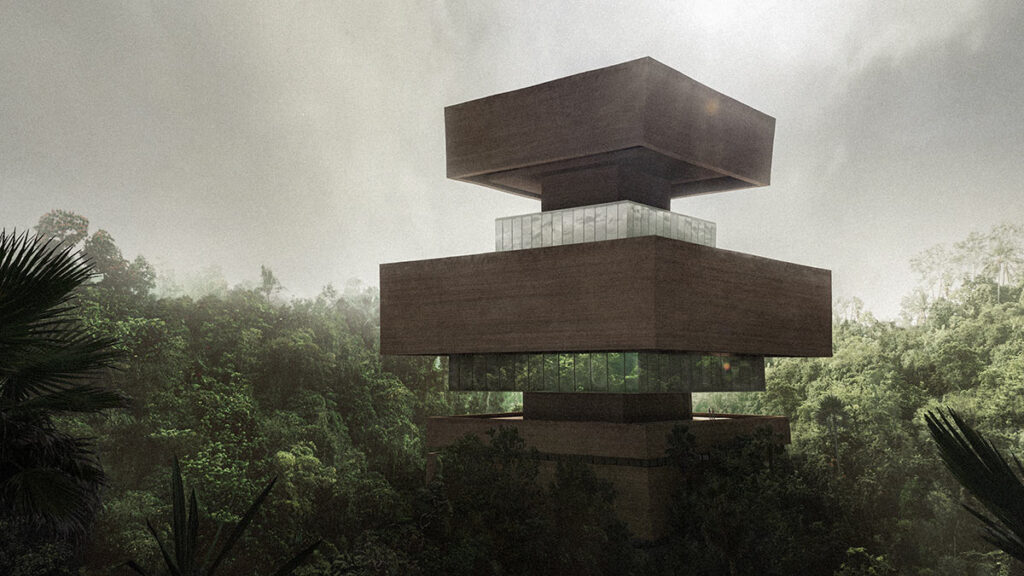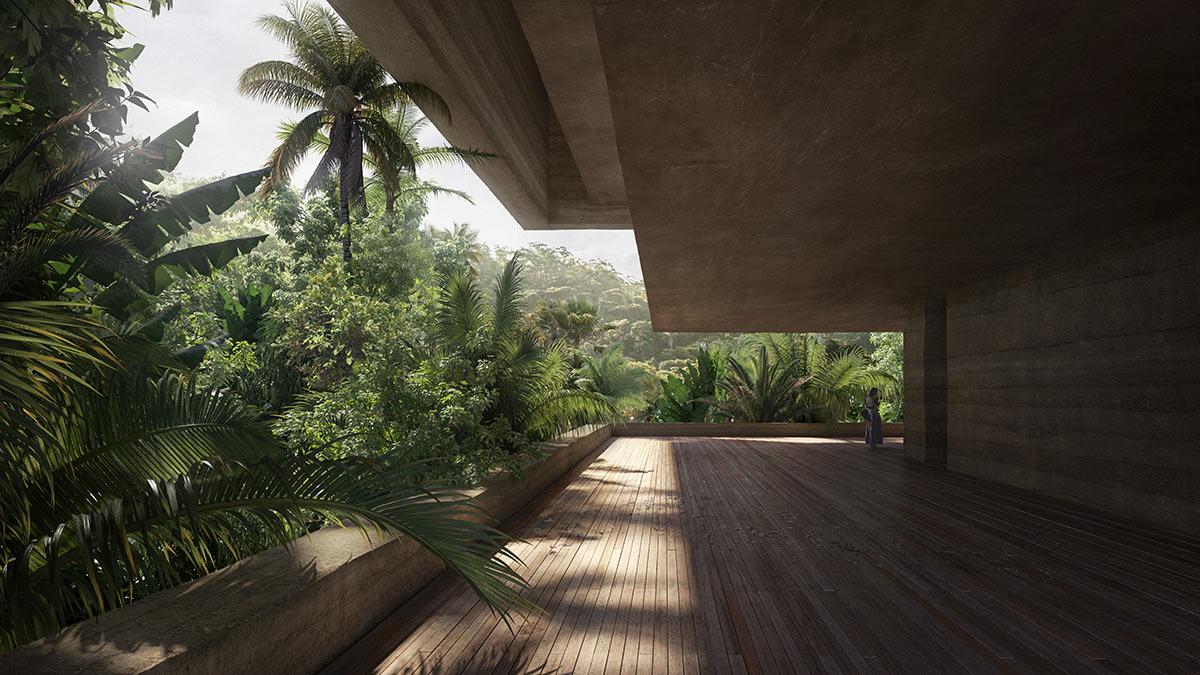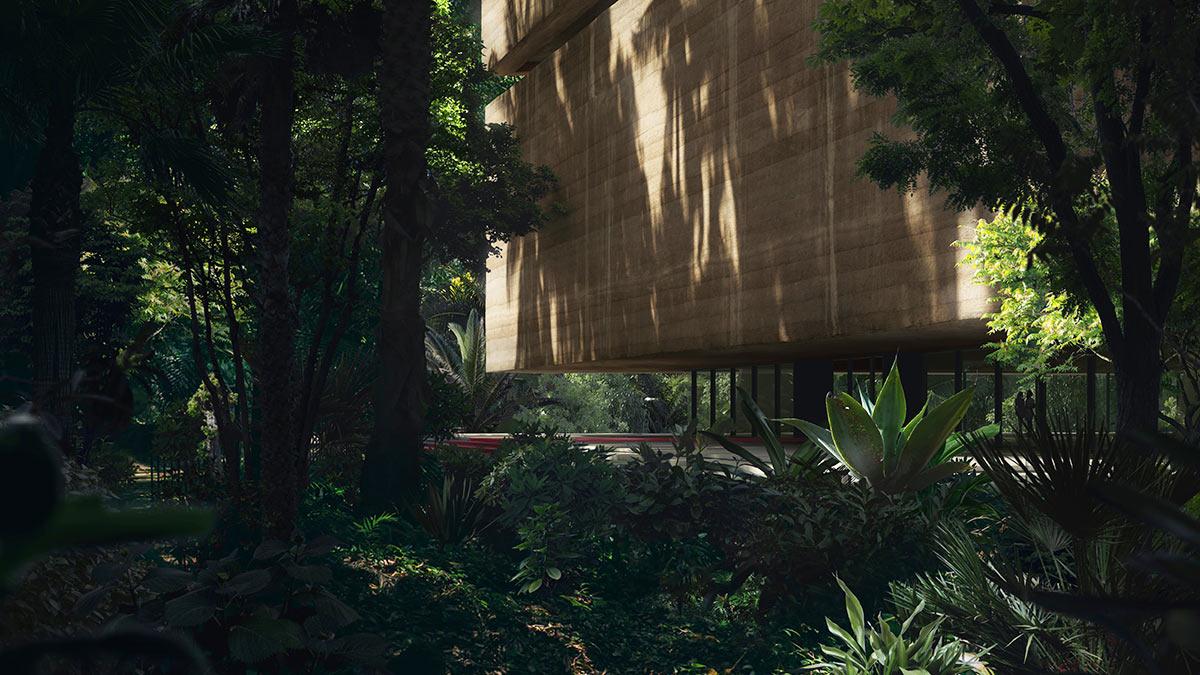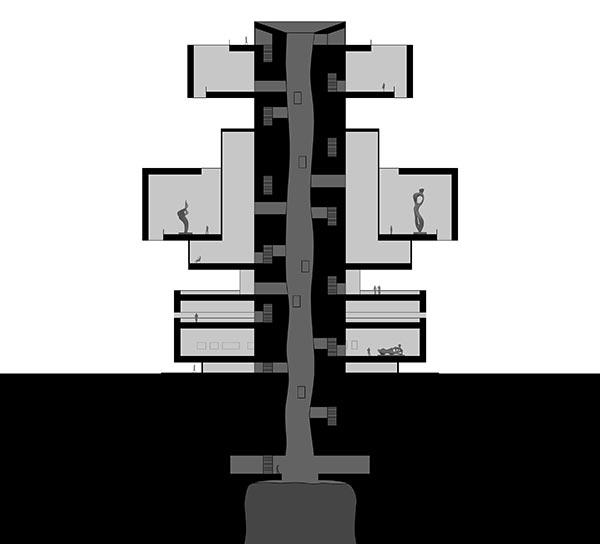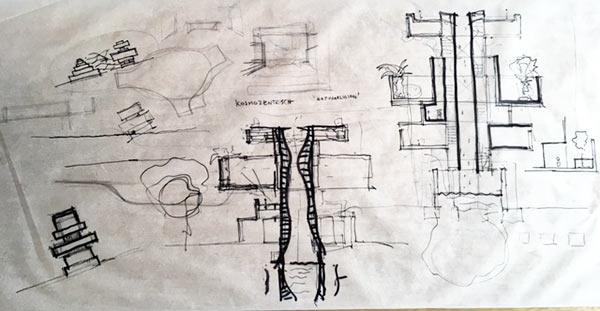Replacing concrete with earth
On the edge of the tropical rainforest in Mexico, a research museum will explore how nature and progress can be reconciled. Known as Xinatli, its sophisticated design takes a fresh look at circular building materials.
From the outside, the design seems like a futuristic building made of concrete and glass. A brutalist revival celebrated in the midst of a dense rainforest. This impression is wrong on two accounts, though. Firstly, not a single gram of concrete is used in its construction. Secondly, right now the dense jungle surrounding this future temple of culture exists solely in the project’s renderings. The reason for this: Xinatli will be built in the Mexican rainforest, in an area impacted by illegal deforestation.
Art collector as museum founder
Over the coming years, this cleared area will be reforested. The land has been declared a legal entity that will be returned to nature. Environmental organizations and local communities will become the new custodians and are expected to live in harmony with the land. In the eyes of Mexican art collector Fernanda Raíz, this reclaimed land was the perfect place for a museum that is dedicated to harmonious coexistence in the 21st century.
“Until now, museums have usually been a space where power is put on display. A new kind of museum should not be a showcase for supremacy but instead a place that advocates for greater equity: in ecology, in art and in society,” explains the museum founder. This extraordinary cultural building in southern Mexico aims to sow the seeds for a new relationship between humans, animals and plants.
Deconstructing the step pyramid
It is a concept that is also anchored in the name of the project. The name Xinatli is based on the term Xinachtli from the Nahua language and describes the moment when a seed germinates. “The phrase symbolizes creation and honours the potential for metamorphosis,” according to the project description. A kind of metamorphosis has been implemented by the architects in their design as well.
Until now, museums have usually been a space where power is put on display. A new kind of museum should not be a showcase for supremacy but instead a place that advocates for greater equity: in ecology, in art and in society.
Fernanda Raíz, art collector and museum founder
Initial designs for the museum by Hamburg-based Studio Viktor Sørless and Estudio Juiñi from Mexico have dismantled the traditional early American step pyramid and reassembled it in a new shape. This is a conscious deconstruction that has a metaphorical significance. Specifically, the step pyramid is not merely an expression of Mesoamerican culture, but also a “symbol of a class society, the split between rich and poor.”
Instead of leaving it on the ground as usual, the plinth has been raised by the architects to the height of the tallest trees. Symbolically, humans are being put “eye-to-eye” with nature. “Behind Xinatli is the idea of developing a sensual and compassionate relationship with the world and leaving hierarchical thinking behind,” summarizes Fernanda Raíz.
Earthy brutalism
Xinatli’s architects have created aesthetics that are reminiscent of a minimalist concrete structure from the brutalist era. The similarities go no further than that, though, as the concrete has been replaced with earth. Unsurprisingly, the architects commissioned with this work are well acquainted with the rammed-earth method. They have been experts in the field of earth building for many years.
We are working on a breakthrough in using earth as a natural building material superseding concrete as a construction material.
Viktor Sørless, architect
To increase the stability and weather resistance of the earth structure, Xinatli will be built with the help of local craftspeople who will contribute the construction expertise passed down to them. The building will use resin from the chukum tree, whose importance goes as far back as Maya civilization. Besides wood and sisal fibres, living trees will act as static load-bearing elements, and a stone stack stabilizes the building. There is a shaft running through the middle where rainwater will flow, forming a pool deep down under the surface.
“We have been using this natural building material ever since humans started settling,” explains architect Viktor Sørless. “Earth can be reintroduced into the cycles of nature and makes ecological sense. We are working on a breakthrough in using earth as a natural building material superseding concrete as a construction material.”
Uniting culture and nature
The cradle-to-cradle principle – where raw materials are kept in a perpetual cycle – will also serve as one of the key research areas at the museum. Circular thinking, artistic processes and the development of earth-based ecology aim to bridge the nature-culture divide. Several art spaces and a scientist-led terrestrial institute will join the museum on these 90-hectare grounds.
Examining nature as a legal entity will be part of the scientific and artistic discourse at Xinatli. Environmental organizations have demanded that nature should be furnished with rights similar to those of humans and companies. This in turn will enable nature itself to take action when faced with illegal logging.
Text: Gertraud Gerst
Translation: Rosemary Bridger-Lippe
Images: Studio Viktor Sørless, Estudio Juiñi (Design), bloomrealities (Renderings)
